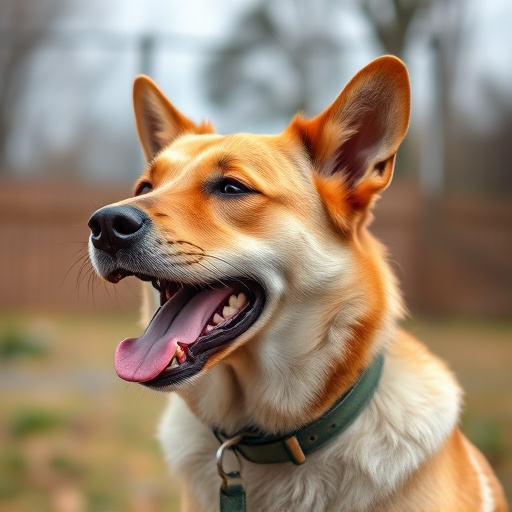Using animal control spray legally requires understanding unique regional regulations governing use, acquisition, and carrying. Reliable trigger mechanisms are crucial for safety, effectiveness, and control, with modern designs offering quick-release and automatic shut-off valves. These mechanisms protect people, pets, and wildlife while aiding in managing aggressive animals in urban and farm settings. Responsible mace use, understanding its environmental impact, and adhering to local laws foster coexistence with wildlife.
“Animal control spray, also known as pepper spray or mace, is a powerful tool for managing aggressive wildlife. This article delves into the legal use of animal repellent spray, exploring diverse aspects from understanding local regulations and obtaining permits to reliable trigger mechanisms and their safety features. We’ll uncover effective use cases, debunk common misconceptions, and discuss environmental impact with sustainable practices. Moreover, we’ll focus on the importance of choosing reputable products for responsible wildlife management.”
- Understanding Legal Frameworks: Regulations and Permits
- Reliable Trigger Mechanisms: Safety Features Explained
- Effective Use Cases: Situations for Animal Repellent Spray
- Common Misconceptions: Debunking Urban Legends
- Environmental Impact: Sustainable Practices and Concerns
Understanding Legal Frameworks: Regulations and Permits
When considering the legal use of animal control spray, understanding the regulatory frameworks is paramount. Each jurisdiction has its own set of laws and permits that dictate when and how such devices can be employed. These regulations are designed to balance public safety with the ethical treatment of animals. It’s crucial to check local, state, or provincial laws, as well as any specific requirements from wildlife management agencies.
Reliable trigger mechanisms for mace or similar spray devices are a key aspect often governed by these laws. Manufacturers and users must adhere to standards ensuring the devices are safe, effective, and easy to control. Permits may be required for acquiring, carrying, or using animal control spray, particularly in areas where wildlife is protected or in close proximity to residential zones.
Reliable Trigger Mechanisms: Safety Features Explained
Reliable Trigger Mechanisms: Safety Features Explained
When it comes to animal control sprays like Mace, the reliability of the trigger mechanism is paramount. These devices are designed to deter aggressive animals effectively while ensuring user safety. Modern designs incorporate advanced safety features such as quick-release mechanisms and automatic shut-off valves, reducing the risk of accidental discharge. The trigger mechanisms are engineered to be easy to operate, allowing users to activate the spray with a simple press or flip, enhancing responsiveness in high-pressure situations.
Moreover, many models feature sensitive triggers that respond to motion or pressure, activating only when needed. These safety features ensure that the spray is deployed precisely and only when encountering an aggressive animal, minimizing potential harm to humans, pets, and wildlife. Reliable trigger mechanisms not only enhance the effectiveness of animal control sprays but also contribute significantly to their overall safety and usability.
Effective Use Cases: Situations for Animal Repellent Spray
Animal repellent spray, also known as pepper spray or mace, has various effective use cases in managing and controlling animal interactions. In urban areas, where wildlife like raccoons, squirrels, and even deer can become a nuisance, reliable trigger mechanisms for mace are employed to deter these animals from accessing residential spaces, gardens, and public areas. By using targeted sprays, homeowners and property managers can humanely repel wildlife without causing them harm.
For farmers and livestock owners, animal repellent spray plays a crucial role in protecting crops and herds from predators like coyotes, foxes, and wild dogs. The strategic application of these repellents around fields and grazing areas helps maintain the balance between human activities and natural habitats, ensuring both food security and the well-being of domestic animals. Reliable trigger mechanisms, such as those found in modern mace devices, enable precise and effective deployment when needed.
Common Misconceptions: Debunking Urban Legends
Many urban legends surround animal control spray, or mace, leading to misconceptions about its legal use and functionality. One common myth is that it’s only permissible for law enforcement, but in reality, these reliable trigger mechanisms for Mace are widely available for civilian use in many areas. Homeowners often employ them for self-defense against aggressive animals, such as dogs that might try to enter their properties.
Another misconception is that mace doesn’t cause lasting effects. While it’s true that the spray temporarily incapacitates an animal or person by targeting their respiratory system, it can still have lingering impacts, especially in enclosed spaces. It’s crucial to understand these facts when considering the legal use of animal control spray, ensuring responsible handling and compliance with local regulations.
Environmental Impact: Sustainable Practices and Concerns
Animal control spray, often referred to as mace, has been a subject of debate due to its environmental impact. While it offers an effective solution for managing aggressive wildlife, concerns have arisen about its long-term effects on ecosystems and non-target species. The key challenge lies in striking a balance between human safety and conservation efforts.
Sustainable practices aim to minimize these impacts by focusing on reliable trigger mechanisms for mace. These advanced mechanisms ensure the spray is only deployed when necessary, reducing accidental releases that could contaminate water sources or harm beneficial wildlife. Additionally, using eco-friendly formulations can help mitigate environmental damage. Responsible use, combined with stringent regulations and research into alternative control methods, is vital to maintaining a harmonious relationship between humans and wildlife.
When it comes to animal control spray, understanding both the legal frameworks and the reliable trigger mechanisms is paramount. This article has explored various aspects, from the regulatory landscape and safety features of reputable brands like Mace, to effective use cases and environmental considerations. By debunking common misconceptions, we’ve emphasized the importance of informed usage. Always remember to prioritize safety, adhere to local laws, and opt for sustainable practices when employing animal repellent sprays.
